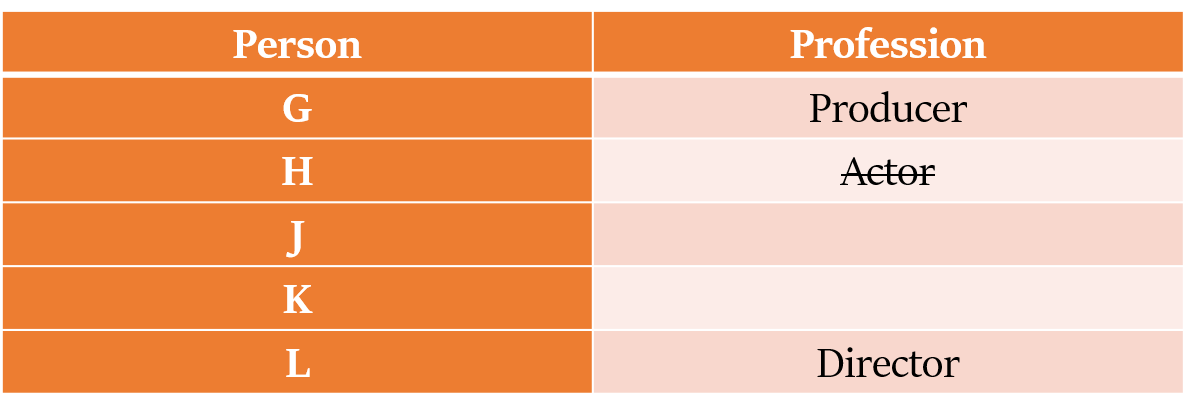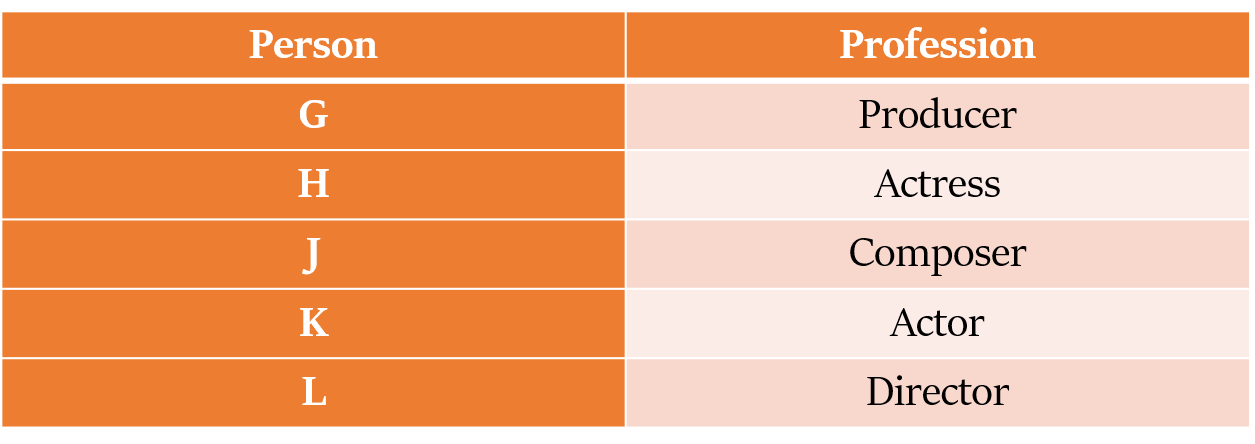Basic Approach to Puzzles
Puzzles section is an important segment of all the Aptitude examinations (CAT, GRE, GMAT, SSC, Banking etc.) and often the most challenging one for many. However, it may become one of the most scoring sections too, once one develops a knack of it through constant practice, using appropriate techniques.
A few topics that are considered to be a part of Puzzles are Arrangements (linear & circular), comparison, scheduling, selection, etc. It generally appears as a set of 4-5 questions. (Though in SSC Tier I most of the questions are pretty simple and of stand-alone nature.)
This feature of Puzzle sets makes it both a golden mine and a land mine, depending on how you perceive it. It’s a typical case of seeing a half glass, as full or as empty. Cracking a Puzzle set quickly may allow you to solve 4-5 questions in tandem. On the other hand, if you get stuck, not only will you end up losing the marks assigned to that set, but will also waste precious amount of time that could have been utilized in solving other questions.
Hence, attempting the Puzzle section requires one to adopt a very clinical and systematic approach. The modus operandi described below is applicable on any kind of Puzzle set.
Modus Operandi for solving Puzzle sets
Finding out the dimensions involved
Any Puzzle set is based on a single or more dimensions, e.g. sitting arrangement, relations between the people, profession etc. Generally the more the dimensions involved, the more difficult a set becomes to solve. Have a look at the following examples:
Set 1
P is taller than T and shorter than S. R is taller than Q, who is shorter than T. R is shorter than S and taller than P. Arrange them in order of descending heights.
Analysis of Set 1: Here there are 5 people who have been compared on a single dimension of height.
Set 2
In a seating arrangement there will be an actor, director, actress, producer and composer. Their names are G, H, J, K, L, not necessarily in that order. It’s also given that:
I. Actor must sit in the middle
II. Producer does not wish to sit next to composer
III. L is the director
IV. Actress and producer want to sit on either side of actor
V. H is not the actor
VI. Actor does not want to sit next to J or L
VII. G, who is the producer, wants to sit in his lucky number seat 4
VIII. H wants to sit between K and J
Analysis of Set 2: In set 2 there are again 5 people, just like set 1. However, now there are two dimensions involved, i.e. sitting order and their professions. Hence, we may safely presume that set 2 will be notch above set 1 as far as difficulty level is concerned.
A candidate should try to find out the dimensions involved in a Puzzle set within 10-12 seconds, before actually attempting a particular set (this logic applies to all types of Set Questions, e.g. Reading Comprehension Questions in English too).
It will give you a clue regarding the difficulty level of the set and the approximate time that will be consumed in solving it. This technique will come handy if there is a time crunch and a candidate has to chose one Puzzle set from among a few. It will be more pragmatic to solve a set that can be cracked quickly and easily. Even otherwise, it’s preferable to solve easier sets before getting involved with the tougher ones.
However, one more criteria should be kept in mind while choosing or skipping a Puzzle set - the number of questions attached with that set. Generally once a Puzzle set is cracked open; it hardly takes any time to solve the questions based on it. So if many questions are based on a moderately tough set then it might pay richer dividends than a single question based on an easier Puzzle set.
This art of choosing will develop only through practice.
Though, ideally our goal should be to attempt all the questions in the reasoning section. But it’s not possible in some exams like Bank Mains, MBA exams etc.
Choosing the right table or diagram
It’s always advisable to construct a table or a diagram to represent the information given in the Puzzle set. However, the kind of tables to be chosen or the diagrams to be made have to be such that most of the information gets represented with ease and it’s convenient to draw information out of the data.
One or two dimensions may be chosen as a base/hinge, on the basis of which the tables/diagrams may be drawn. For example, in a circular seating arrangement puzzle, we can draw a circle diagram and place the people first. That is, here the positions of various people will act as the base/hinge and then we will add other aspects to the diagram, like their professions, the colour of their shirts etc.
We will study all this in subsequent articles, where we will see the appropriate data representation for each type of puzzle. Best way to teach and learn this is via examples.
Filling the tables with data
All the information related to the dimensions chosen as the hinge should be filled up in the tables/diagrams. Keep in mind to strike out the data/statements that you have already utilized in filling up your tables/diagrams.
Read between the lines
After all the basic information related to the hinge dimension is filled up in the table, an aspirant should then start reading between the lines utilizing the unused data and the incomplete tables/diagrams formed. The goal should be to arrive at the complete picture.
However, it would be wise to add a caveat here. Sometimes the data given in the problem set is not sufficient to fill up the table(s) completely. In such a Puzzle set the questions are formulated in such a manner that either the absent data is not required to get to the answer, or the questions themselves provide some more data to enable us to solve the question. Hence, it’s always wise to have a look at the questions asked in a set.
The modus operandi suggested above will become clearer with the use of a few examples. Let us start by solving the set 2 given above.
Example 1
In a seating arrangement there will be an actor, director, actress, producer and composer. Their names are G, H, J, K, L, not necessarily in that order. It’s also given that:
I. Actor must sit in the middle
II. Producer does not wish to sit next to composer
III. L is the director
IV. Actress and producer want to sit on either side of actor
V. H is not the actor
VI. Actor does not want to sit next to J or L
VII. G, who is the producer, wants to sit in his lucky number seat 4
VIII. H wants to sit between K and J
Who is the actor?
(a) G (b) H (c) K (d) L
Where does director sit?
(a) 1st position (b) 2nd position (c) 3rd position (d) 5th position
Explanation for Example 1
We have already discussed that there are 2 dimensions involved in this set, i.e. sitting order and their professions. Now we will make a table showcasing the profession of different people and a figure representing the sitting arrangement of those 5 people.
Once we have decided the tables/diagrams to be made, we will start filling them with the related information.
Using statements I, III, IV, V, VI and VII, we get the following picture:


Readers should note that we have left out the information in the statements II and VIII in the first round. Let us understand why?
Statement II says that Producer does not wish to sit next to composer. It is giving relation between the two professions. However, our figure is based on the sitting arrangement (which is the hinge) and its relation with people and professions. Similarly the table drawn by us represents the relation between the persons and the professions.
Statement VIII gives information regarding the relation of a person H with other people K and J. Again this information cannot be placed in either the table or the figure drawn by us in the first round.
However, once we have filled the tables/figures with the related information, it’s time to start the second level processing of reading between the lines to fill the rest of the figure/table. We will do this by using the left out information in statements II and VIII.
Using statement V and VIII, we can infer that as H is not an actor, he cannot be sitting in the middle position. Now, we already know that J/L are sitting at the extreme ends and G is sitting on the 4th position. Hence, H must be sitting on the 2nd position between K and J. So, J must be sitting on 1st position and L on the 5th. Also, as we know from the table that G is the Producer. Hence, H must be the Actress.
From statement II, we can conclude that L cannot be the Composer. Hence, he must be the Director and J must be the Composer.


Hence, K is the actor and Director sits on the 5th position.
Let us discuss one more example:
Example 2
In a bike rally seven bikes of different companies - A, B, C, D, E, F and G are standing. It’s known that:
I. A is just to the right of G.
II. G is fourth to the right of C.
III. D is between B and F.
IV. C, which is third to the left of B, is at one end.
Which one of the following is the correct position of E?
(a) Just to the left of A
(b) Just to the left of F
(c) Between F and G
(d) Fourth to the right of D
Explanation for Example 2
This set involves only one dimension, i.e. the sitting arrangement of bikes. Hence, it must be comparatively an easy set. We will make a diagram based on the sitting arrangement of the seven bikes (i.e. sitting arrangement will be our hinge).
The first three statements give relation between the relative positions of various bikes. Hence, we cannot use them to fill our diagram in the first round.
However, the statement IV states that C is at one end. As it gives the absolute position of a bike, we may use it. Now, as it is third to the left of B, it must be occupying the leftmost position. We get the following picture:

Now the stage is set to start the second level of processing using the statements I, II and III.
According to statement II, G is fourth to the right of C, i.e. at 5th position from the left. Using statement I, we can infer that A must be occupying the 6th position. Using statement III, we can see that D must be at the 3rd position. The final scenario that emerges can be represented as follows:

Thus, E is fourth to the right of D.
Having introduced the readers with the basic approach to tackle Puzzle sets, our next goal will be to get specific and provide you with a few tips to handle various types of Puzzle sets, e.g. those based on arrangement (linear/circular), comparison, scheduling, selection etc. These topics will be taken up in the subsequent articles of this Puzzle module.